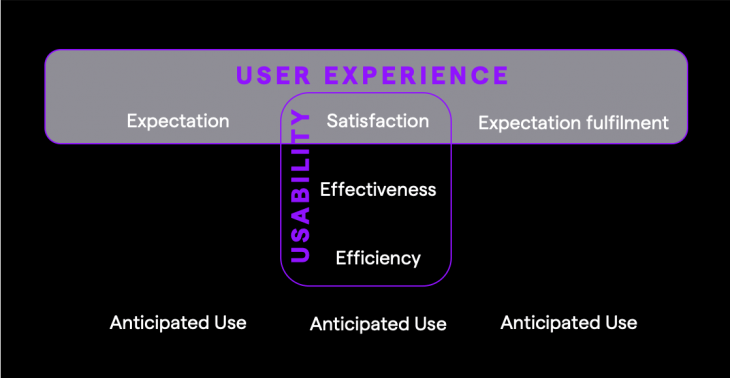If the user can't use it, it does not work!
The first one I mentioned was non-functional Testing. Gartner noted that "the lack of a formal approach to the management of testing for non-functional quality characteristics of applications is a gaping hole in the QA processes of most organisations" (J. Herschmann).
Out of my experience, I totally agree with this statement.
Non-functional Testing is a vast area aimed at checking non-functional aspects of the object under test, and it includes (the list is by far not exhaustive) load and performance, security, reliability, compliance, usability, portability, interoperability, maintainability etc.
Given the vastity of this field, I would like to concentrate my attention on the aspect which I believe has the most significant potential to impact the way software products will be created and tested in the near future: Usability Testing.
Usability and Usability Testing
According to the definition provided by ISTQB, usability is the extent to which a (software) product can be used by specified users to achieve defined goals with effectiveness, efficiency and satisfaction in a specified context of use.
Without entering too much into the theoretical details, it is essential to stress the difference between usability and user experience, which the following picture explains:
User Experience describes the user's perceptions and responses resulting from the use and/or anticipated use of a product or service.
Usability Evaluation is the process through which information about the usability of a system is gathered to improve it or to assess its merit. The principal techniques used in usability evaluation are:
- Usability Review – Experts and users evaluate, based on their experience, the user interface of a product
- User Surveys – Users fill out a questionnaire aimed at understanding their satisfaction with the product
- Usability Testing – Users are observed while performing typical tasks with the product
Organising and conducting Usability Testing is a challenging activity, which requires thorough preparation, empathy, discipline and excellent coordination skills (several people and roles are involved).
User Centricity
Now that it is clear what Usability Testing is, let's come to why I think it will play a crucial role soon.
We live in what many call the "4th industrial revolution", in which the user as a person has gained tremendous importance. Everything can be personalised and should be tailored to the individual user's needs (let's think for a moment of how the offer for TV or music services has evolved in the last five years!).
Companies, which have understood that users must be considered in their unicity, are winning the competition over the ones who insisted for too long in providing generalist services and products. And this is affecting sectors we would not have thought about just a few years ago, like credit cards (example: Revolut).
The apparent effect is a generally growing awareness around the principle enunciated by Susan Dray: "If the user can't use it, it does not work".
It is the wish and viewpoint of the end-user which determines if the product works and not the conformity to requirements or user stories defined by somebody who thinks like the real user but is not the actual user.
Continuous interaction and a feedback loop with the end-user are crucial to success, allowing the creation of products and services which will meet the user's needs and expectations.
Everyone is responsible for usability
Such a continuous interaction is only achieved when usability testing becomes an integral part (like other types of Testing) of the development lifecycle.
Usability experts shall therefore not be involved just at the end of the process when the product is ready to be deployed (an error which is made more often than one would think). At that point, they can assess what the usability of the product is and find what its main usability problems are. They will therefore not contribute to improving its usability.
Usability should instead be infused right from the beginning of a project by ensuring a close collaboration among architects, developers, UX designers and usability testers in each phase of it.
The general principle, according to which everybody is responsible for quality implies in fact that everybody is also accountable for usability. That needs to be stressed to ensure everybody feels this responsibility.
Human-Centred Testing
Software Development and Testing have been traditionally distant from the needs and feelings of the end-users. This is now changing, and we witness an increasing use of Design Thinking and Human-Centred Design methods in the software industry. The change in perspective is profound and, as with every move, it generates fears and faces resistance.
I nevertheless believe the process is irreversible and that, as Testing professionals, instead of focusing on how many bugs we find in a project, we should start asking ourselves if the product will work for the user. Having that as the polar stern driving our testing strategy, we will not only ensure the product does not contain nasty defects, but we'll also help our colleagues in the development and product management teams to create products and services which the end-users will love.
Allowing myself to be a bit visionary, I foresee Usability Testing will in the upcoming years establish itself as an essential discipline, driving the transition to a "Human-Centred Testing", which will permeate the whole lifecycle of product and service development.
